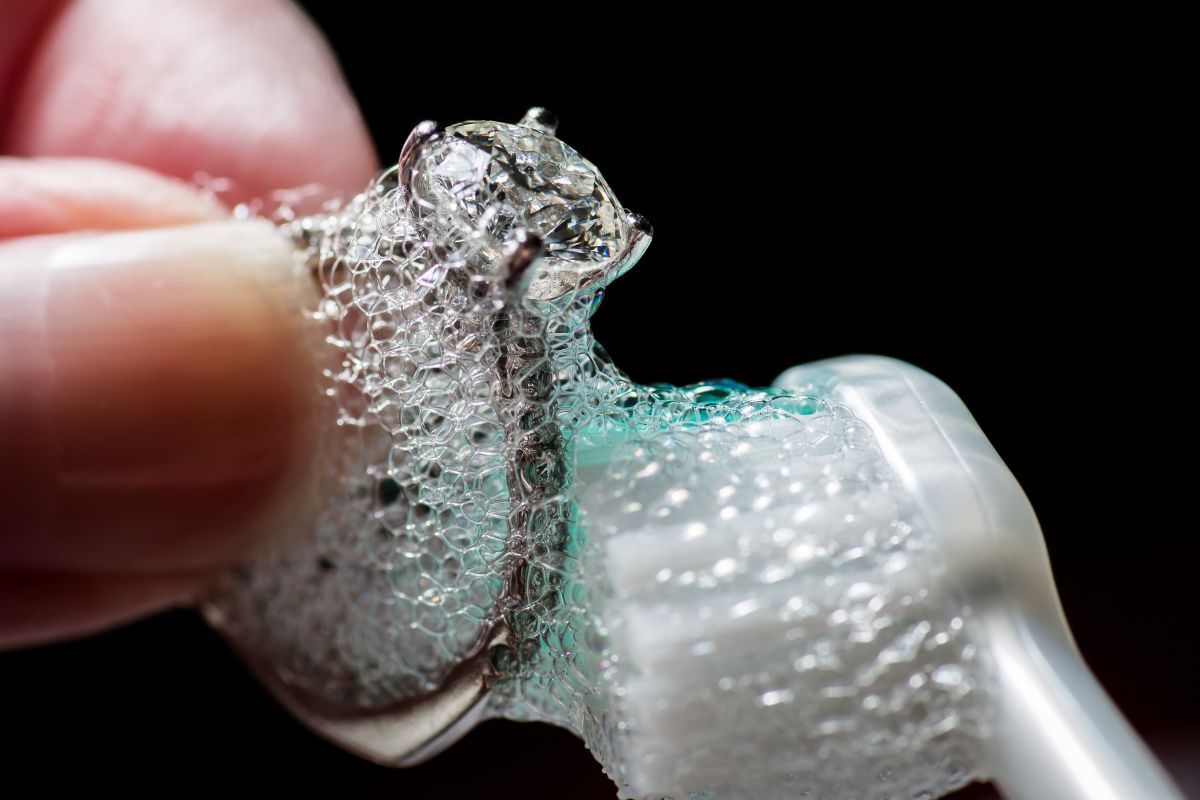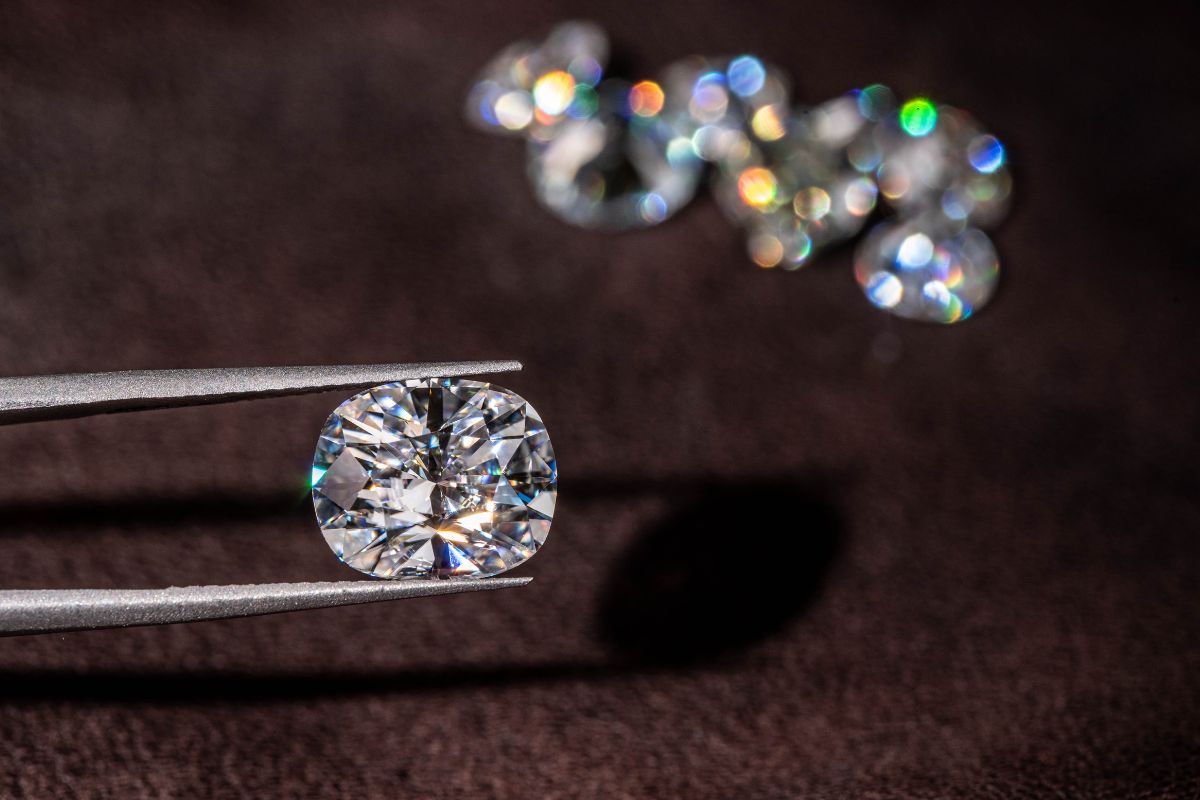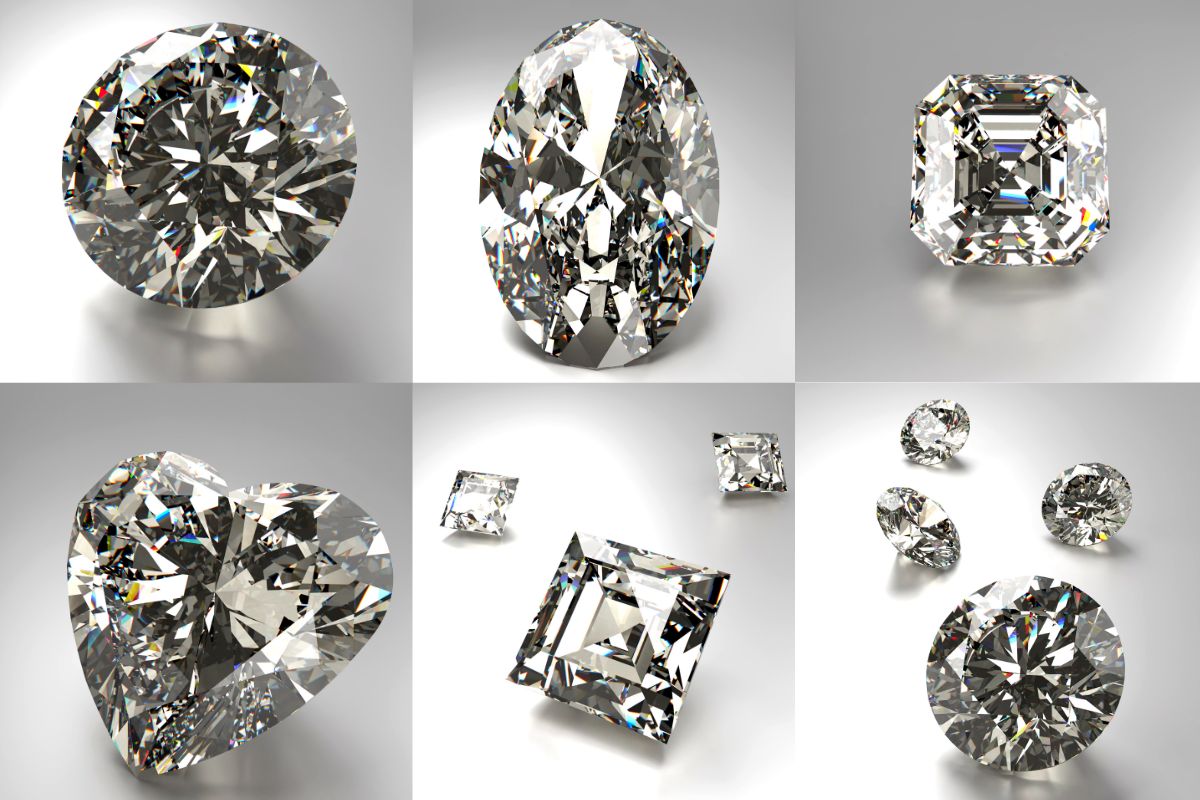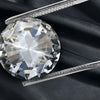
Lab Grown Diamonds Value: Assessing Investment Potential and Market Trends
As a consumer in the market for diamonds, it's important to stay informed about the evolving landscape of diamond sourcing. This is particularly with the emergence of lab-grown diamonds.
These diamonds, also known as synthetic or cultured diamonds, are real diamonds created in controlled laboratory environments. They replicate the natural process of diamond formation but in significantly less time.
The appeal of lab-grown diamonds continues to grow due to their affordability. They often cost significantly less than their mined counterparts, sometimes as low as 40 to 50 percent of the price for a comparably sized and graded natural diamond.
Value is not solely determined by the initial purchasing cost, and this is where lab-grown diamonds present a nuanced discussion.
They hold intrinsic value as they possess the same physical, chemical, and optical properties as mined diamonds. However, it's widely accepted that lab-grown diamonds don't typically retain the same resale value as natural diamonds.
Various factors influence this, including the lower costs of production and a more volatile pricing structure due to technological advancements in manufacturing.
As I explore the value of lab-grown diamonds, I consider their market perception, the quality offered, and the growing significance they have amongst consumers who prioritize ethical and sustainable choices.
These elements contribute to the broader understanding of value, which is not just monetary but also linked to personal and ethical considerations. Therefore, the true worth of lab-grown diamonds extends beyond fiscal value and touches upon the consumer's individual values and preferences.
Understanding Lab Grown Diamonds
In exploring the realm of lab grown diamonds, I focus on what they are, the technology behind their creation, and how they stack up against natural diamonds.
What Are Lab Grown Diamonds?
Lab grown diamonds are true diamonds created in controlled environments using advanced technological processes. Despite their synthetic origins, these diamonds possess the same physical, chemical, and optical properties as their natural counterparts found in the earth.
The Science Behind Creation: HPHT and CVD
High-Pressure, High-Temperature (HPHT) and Chemical Vapor Deposition (CVD) are the cornerstone technologies in synthetic diamond creation.
HPHT mimics the natural formation conditions with high pressure and temperature to transform carbon into a diamond. Alternatively, CVD grows diamond crystals layer by layer from a gas mixture, typically involving a hydrocarbon gas like methane.
-
HPHT Process:
- High pressure and temperature
- Transformation of carbon structure
-
CVD Process:
- Layer-by-layer crystal growth
- Gas mixture, often containing methane
Comparison Between Lab-Created and Natural Diamonds
| Aspect | Lab-Created Diamonds | Natural Diamonds |
|---|---|---|
| Origin | Created in a controlled laboratory environment using advanced technological processes. | Formed naturally deep within the Earth's mantle over millions of years. |
| Composition | Chemically identical to natural diamonds, composed of pure carbon crystallized in an isometric crystal system. | Also composed of pure carbon crystallized in an isometric crystal system. |
| Formation Time | Can be produced in a matter of weeks to months. | Formed over millions to billions of years. |
| Cost | Generally more affordable than natural diamonds. | Pricing influenced by factors such as rarity, size, and quality. |
| Environmental Impact | May be considered a more environmentally friendly option due to reduced environmental impact compared to mining. | Mining diamonds has environmental considerations, including habitat destruction and carbon emissions. |
| Market Perception | Perceived by some as a sustainable and ethical choice. | Valued for their rarity and natural origin. |
The differences between lab-created and natural diamonds are primarily in their origin and price point.
Lab grown diamonds are typically less expensive—about 30-40% the price of a natural diamond. While they share the same crystal structure and appearance, the resale value of lab-grown diamonds is usually lower.
-
Price:
- Lab grown: Approximately $1,200 per carat
- Natural: Approximately $4,200 per carat
-
Resale Value: Lower for lab grown diamonds
Both HPHT and CVD diamonds cater to consumers seeking ethically sourced options without compromising on the diamond’s brilliancy or composition.
Quality and Certification

In this section, I'll guide you through the essential aspects of assessing lab-grown diamonds' quality and the importance of proper certification. These factors are critical to understanding their value and ensuring you make an informed purchase.
Evaluating the 4Cs: Cut, Color, Clarity, Carat
Cut: The precision of a diamond's cut determines its brilliance and fire. Lab-grown diamonds can range in cut quality, with excellent cuts displaying maximum sparkle and light performance.
- Table of Common Diamond Cuts:
- Round Brilliant: Maximizes light return
- Princess: Offers a modern look with good light dispersion
- Cushion: Combines a square cut with rounded corners
Color: A diamond's color grade influences its appearance and price. Lab-grown diamonds come in a spectrum of colors, with grades D (colorless) being the most valuable.
- Color Grading Scale:
- D-F: Colorless
- G-J: Near-colorless
- K-M: Faint yellow
Clarity: This refers to the absence of inclusions and blemishes in the diamond. Generally, the fewer the imperfections, the rarer and more expensive the diamond.
- Key Clarity Grades:
- FL: Flawless
- IF: Internally Flawless
- VVS1-VVS2: Very Very Slightly Included
- VS1-VS2: Very Slightly Included
- SI1-SI2: Slightly Included
Carat: The weight of a diamond, which significantly affects its value. Higher carat weights command higher prices, though cut, color, and clarity are also crucial.
Certification Authorities: GIA, IGI, and Others

GIA (Gemological Institute of America): Renowned for their thorough grading systems. When a GIA report is issued for a lab-grown diamond, it signifies a reliable assessment.
IGI (International Gemological Institute): Known for offering detailed certificates for lab-grown diamonds, an IGI certificate represents an authoritative judgment on the diamond's quality attributes.
- Comparing Certificates:
- GIA: Provides a single grade for clarity and color.
- IGI: Offers comprehensive grades for each quality feature.
Other reputable certification bodies include the Gem Certificate and Assurance Lab (GCAL). Each body has its own grading standards, but all aim to accurately represent the quality of the diamond.
Understanding the Role of Appraisals
An appraisal is an expert's valuation of a diamond's worth. It is especially important for insurance purposes and resale scenarios.
Lab-grown diamonds, while typically lower in resale value compared to natural ones, must be appraised based on their:
- Quality Parameters:
- 4Cs Evaluation
- Certification Details
The appraisal reflects the current market value, but it may not necessarily align with the price of initial purchase, especially for lab-grown diamonds that tend to depreciate more than their natural counterparts.
Market Dynamics and Value Proposition
| Diamond Type | Average Price Range | Factors Influencing Price |
|---|---|---|
| Natural Diamonds | $3,000 - $20,000+ per carat | Quality (Cut, Color, Clarity, Carat Weight), Rarity, Market Demand, Certification |
| Lab-Grown Diamonds | $800 - $8,000 per carat | Quality (Cut, Color, Clarity, Carat Weight), Production Costs, Market Demand, Certification |
In this section, I will discuss the intricacies of the lab-grown diamond market, focusing on its demand and supply dynamics, the pricing differences between lab-created and natural diamonds, and the aspects influencing their resale value and depreciation.
Lab Grown Diamonds Demand and Supply
The demand for lab-grown diamonds has been on an upward trajectory, driven by consumer awareness and the quest for ethically sourced alternatives.
In 2021, the market value of lab-grown diamonds was substantial, and forecasts suggest an expanding market share through 2030.
This growing demand is met by advanced production methods such as Chemical Vapor Deposition (CVD), which are becoming increasingly efficient, thus influencing the supply chain positively.
Price Comparison with Natural Diamonds
Lab-created diamonds generally offer a cost advantage over natural diamonds.
For instance, a 1.00 carat lab-grown diamond might be priced at $1,340, while a 20.65 carat could be as high as $152,210.
These figures suggest that:
- Price per carat: Lab-grown diamonds are significantly less expensive.
- Price Range: Both markets cater to a broad range of budgets.
Understanding Resale Value and Depreciation
The resale value of lab-grown diamonds typically does not match that of natural diamonds. Value retention is a crucial factor for investment-minded buyers, where natural diamonds have traditionally held their value better over time.
However, the pricing of lab-grown options makes them approachable for consumers less concerned with resale, who prioritize upfront savings and ethical considerations.
Consumer Considerations

When I'm exploring diamond options, a few key factors come into play. It's crucial to look at what aligns with personal needs, ethical values, and budget. In this context, lab-grown diamonds offer fascinating avenues both as an affordable and ethical alternative to natural diamonds.
Choosing the Right Diamond for Your Needs
Picking the perfect diamond can be a challenge. Each consumer has unique preferences for size, cut, color, and clarity. Unlike natural diamonds, lab-grown counterparts allow for a degree of precision and predictability.
My focus is to always educate myself on the grading system used for diamonds. This system is generally the same for both mined and lab-grown varieties, ensuring I can make an informed decision.
Ethical and Environmental Benefits
My ethical compass leans heavily into the sourcing of the gems I choose. Lab-grown diamonds are indeed ethical alternatives, boasting a conflict-free origin. They address a number of ethical issues associated with mining, such as labor practices and environmental degradation.
In terms of environmental benefits, they tend to have a lower ecological footprint, especially in terms of land disruption and resource usage compared to traditional mining operations.
Budgeting and Financing Options
Cost: Lab-grown diamonds often present a more wallet-friendly option, with prices typically lower than those of mined diamonds. They can range quite broadly, influenced by the same factors that affect natural diamonds: cut, clarity, color, carat.
For Example:
- 1.00 carat Lab-Grown Diamond: Approx. $1,340
- 20.65 carat Lab-Grown Diamond: Approx. $152,210
My strategy is to thoroughly investigate financing options, which can vary, and compare prices across sellers to find the best deal. Seeking diamonds that fit within my budget, without compromising on quality, is my goal.
Purchasing and Care

When I approach the purchase of lab-grown diamonds, I focus on selecting a vendor known for their credibility and ensure I understand the care required to maintain the gemstones' brilliance.
Selecting a Reputable Jeweler or Vendor
I make it a point to purchase lab-grown diamonds from reputable jewelers or vendors such as James Allen, Brilliant Earth, or Blue Nile. These vendors are recognized for their quality and transparent practices.
I look for the following when selecting a jeweler:
- Certifications: I check if the diamonds are certified by reputable organizations.
- Customer Service: I assess their service, including return policies and warranties.
- Reviews: I read customer reviews to gauge satisfaction and trustworthiness.
- Range of Options: I consider if they offer a variety of choices in terms of size, cut, and quality.
Maintenance and Longevity of Lab Grown Diamonds
Caring for lab-grown diamonds requires the same attention as caring for natural diamonds. To maintain their sparkle, I adhere to the following care practices:
- Regular Cleaning: I use a soft-bristled brush, mild soap, and warm water to gently clean the diamonds.
- Annual Check-ups: I recommend visiting a jeweler annually to check for any repairs or maintenance needs.
- Safe Storage: I store my lab-grown diamonds separately to prevent scratches and contact with other jewelry.
Investment Perspective

When assessing lab-grown diamonds for investment purposes, it's crucial to consider their current market performance and potential for future value retention.
Lab Grown Diamonds as an Investment Asset
Lab-grown diamonds have gained traction in recent years due to their lower price point compared to natural diamonds, with a one-carat lab-grown diamond averaging around $1,200. However, investment value is not solely about initial cost; resale value plays a significant role.
My findings indicate that lab-grown diamonds often carry a lower resale value against their natural counterparts. This is attributed to the intrinsic value that natural diamonds hold through their formation process, rarity, and longstanding cultural and economic significance within the diamond industry.
Market Trends and Future Outlook
The value and price trends for lab-grown diamonds are influenced by various factors.
Firstly, the technology used to create these diamonds is becoming more efficient, making them more accessible and affordable.
Secondly, market acceptance is increasing, yet resale value remains a question due to a saturation of supply.
While some buyers prioritize sustainability and ethical considerations over resale value, from an investment standpoint, the future outlook suggests that lab-grown diamonds may not appreciate as strongly as natural diamonds.
Taking into account the growing production capabilities and changing consumer attitudes, it's reasonable to remain cautiously optimistic about the long-term value retention of lab-grown diamonds in the investment landscape.
Styles and Trends

In the dynamic market of lab-grown diamonds, style and trend developments are driven by innovation and consumer preferences. I’ll explore not just the popular cuts and designs but also the influence of these diamonds in the realms of bridal and fashion jewelry.
Popular Cuts and Shapes of Lab Grown Diamonds
Lab-grown diamonds are renowned for their versatility and are available in a variety of sizes and shapes. The round brilliant cut remains a timeless favorite due to its exceptional fire and brilliance. It's a shape that maximizes the diamond's reflective properties, making it a popular choice for those who value sparkle.
In addition to round brilliants, oval cuts have surged in popularity. Their elongated shape can create the illusion of greater size and lends a flattering effect on the wearer's finger. Oval cuts strike a balance between traditional and modern aesthetics, appealing to a broad audience.
Bridal and Fashion Jewelry with Lab Grown Diamonds
When it comes to engagement rings, lab-grown diamonds have become an increasingly sought-after option. The ability to create larger carat stones at a more accessible price point allows for grander designs without compromising on the ethical sourcing that lab-grown diamonds promise.
Colored diamonds, which are rarer in nature, can also be created in a lab setting. These fancy colored diamonds are available in a spectrum of hues, providing personalized options for both bridal and fashion jewelry. They can be particularly impactful in pieces designed to make a statement or convey individuality.
For bridal jewelry, classic engagement rings with a solitary lab-grown diamond continue to be in demand. However, I've seen a trend towards incorporating these diamonds into more intricate settings, often surrounded by smaller lab-grown diamonds for added impact.
In the realm of fashion jewelry, lab-grown diamonds serve as an ethical and cost-effective means to infuse everyday wear with a touch of luxury. They're used in items ranging from simple stud earrings to more elaborate necklaces, often influenced by current fashion trends while maintaining a degree of timeless appeal.
Also Read
Frequently Asked Questions
In this section, I cover some of the most pertinent queries surrounding lab-grown diamonds, especially regarding their economic aspects compared to their natural counterparts.
How do lab-grown diamonds compare to natural diamonds in price?
Lab-grown diamonds are typically priced about 30-40% lower than natural diamonds of comparable size and quality. This is due to the differences in the respective production and procurement processes.
What factors determine the value of a lab-grown diamond?
The value of lab-grown diamonds is determined by the same factors that affect natural diamonds: the four Cs—cut, color, clarity, and carat weight. However, production costs and the method of creation also play roles in their valuation.
Is there a resale market for lab-grown diamonds?
Yes, there is a resale market for lab-grown diamonds. However, these diamonds often depreciate more than natural diamonds. A second-hand lab-grown diamond will typically fetch a lower price than its natural equivalent.
How does carat weight affect the price of lab-grown diamonds?
Carat weight significantly influences the price of lab-grown diamonds, just as with natural ones. As the carat size increases, the price typically rises due to the greater material requirements and the rarity of larger gem-quality stones.
Are lab-grown diamonds appraised differently than natural diamonds?
Yes, lab-grown diamonds are appraised with consideration to their origin. Despite having identical chemical properties, an appraisal will account for the market perception and value distinctions between lab-grown and natural diamonds.
Can a lab-grown diamond's origin be distinguished from a natural diamond by a professional jeweler?
By standard jeweler's tools, lab-grown diamonds cannot be distinguished from natural diamonds. This is because they share identical chemical and optical properties. Specialized equipment is necessary to identify their origin accurately.
Checkout some of our top collections:
Leave a comment
Please note, comments must be approved before they are published.










